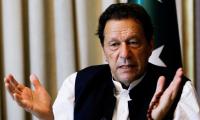While several analysts have compared the manifestos of contesting political parties, not much attention has been paid to the parties’ education policy. It then becomes essential to look closely at the manifestos and check what the parties have to offer in terms of education and whether they have an understanding of budgetary and constitutional realities and the requirements of the 21st century.
The PML-N in its 2024 manifesto promises to increase education spending to 4.0 per cent of the GDP but fails to explain how it is going to do something which it was unable to do during its previous government (2013–2018) -- a period with much better economic indicators.
It appears to be a hollow promise, especially at a time when Pakistan is grappling with an extremely weak currency and a hardly sustainable economy, which is likely to continue at least for the next five years. Unless some major non-development expenditure sees a diversion, expenditure for the education sector will not be on an upward trajectory.
The PML-N’s manifesto also promises safe, accessible and eco-friendly transport nationwide for every student. It seems that the party has not done any calculations to have an idea about the cost of such a project and the resources needed to finance it.
The next promise is about opening nationwide evening schools, without taking into account the fact that after the 18th Amendment, education at all levels has become a provincial matter, and the federal government cannot (and should not) try to do something that is not under its purview.
Even if the PML-N is able to form provincial governments in all provinces, evening schools will require additional staff whose numbers will go in hundreds of thousands nationwide. Again, no explanation has been given to clarify how the party will perform this gigantic task, especially when the performance of the existing teachers in government schools is highly questionable. Boosting public-private partnerships (PPP) is another promise but if past experiences are any guide, most such experiments end up benefitting the private sector.
Many private schools that have become big businesses now, originally benefitted from government-backed initiatives like the allotment large areas of land for schools and low-cost loans. Perhaps it is better to call it public and ‘non-profit’ sector partnerships so that the for-profit corporate sector does not exploit resources in the name of education, especially at a time when the class divide in society continues to expand. Daanish Schools, an initiative that was launched by the PML-N’s Punjab government in 2010, have been performing better for years, but these places are small islands of excellence and benefit a limited number of pupils. When millions of children are out of school, focusing on a couple of thousand students is not a good idea.
Another interesting promise in the PML-N’s manifesto is to establish a national commission on excellence in education. Perhaps it will be more worthwhile to promise provincial commissions on primary and universal education so that the constitutionally empowered provincial governments do their jobs properly rather than allowing a ‘national commission’ – based in Islamabad – to start interfering in a domain which is not its mandate. Similarly, talks about developing a national action plan for artificial intelligence (AI), STEM, machine learning (ML), and technology-driven education appear more to be wishful thinking than a doable plan. More than half of our children are unable to do basic literacy and numeracy exercises, and here we are talking about AI and ML.
There are other such promises too, but for now, let’s end it here and move our focus on the PPP’s manifesto. The PPP pledges to allocate at least 5.0 per cent of the GDP ($17 billion) to education. Again, the same concern arises here: how will the party divert such a high amount of funds when the economy is in shambles and non-development expenditures are unlikely to witness a decline any time soon? Pakistan’s total public debt is somewhere around $100 billion and its annual exports are not more than $40 billion, so, in this situation, how the PPP will allocate $17 billion to education remains a million-dollar question.
A good and appreciable promise of the PPP is the devolution of finances of higher education to provinces. Provincial higher education commissions need strengthening and capacity in research and development, and the provinces can achieve this only if the next government implements the 18th Amendment in letter and spirit. Finances must flow directly to these commissions instead of taking a longer route that runs through the HEC. The PML-N has not thought about these intricacies, but the PPP has at least mentioned this issue in its manifesto.
The PPP’s manifesto also promises to comply with Article 25A of the constitution and enforce compulsory and free education for all children, but, like the PML-N, it fails to outline how it will do so when for the past 15 years, successive PPP governments in Sindh have not been able to offer the same to all children in the province. While ‘school jao, hunar barhao’ (go to school and upgrade your skills) is a good-sounding slogan as arts, crafts, and skills should be one of the primary objectives of any worthwhile education, the plan needs more details than a mere slogan.
The promise to build a primary school within a 30-minute radius and a secondary/higher secondary school within a 60-minute radius raises the question of whether this time is calculated for a person on foot or for a vehicle. Children going to school on foot will find it difficult to walk that long, and if the distance will be covered within the given time frame by car, this will require every student to have access to transport. At present, barely a few schools in Sindh offer transportation facilities to students. One also wonders what prevented the PPP governments in the past 15 years from providing affordable transport to school-going children. Ideally, a secondary school should not be more than 30 minutes away from children anywhere in Pakistan.
An impressive promise by the PPP is to prevent the exploitation of students or teachers. This is a major issue as students have faced exploitation nearly at all levels of education, and girls are more prone to such heinous practices, from schools and colleges to universities. The manifesto promises to have a monitoring mechanism in this regard, and if the PPP is able to honour this promise, it will be a big achievement. The training of teachers and staff at all levels of education must focus on this issue.
The PPP’s manifesto further promises to integrate global citizenship education to build awareness of cultural tolerance for social inclusion. This is a significant promise that all parties should have included in their manifestos. Somehow we have not been able to inculcate good citizenship practices or even a basic civic sense in our youth. This is mainly because civics education has remained a neglected area in education which has focused on scriptures and rote learning of sayings and quotations that hardly make a difference to students’ understanding of citizenship.
One more promise by the PPP that needs attention is to provide well-equipped and inclusive classrooms, libraries, computers, and sports facilities. It is hard to imagine how this will turn into reality, keeping in mind that most government schools in Sindh do not have libraries, and if they do, the books are locked up to gather dust. Some schools that do have computers lack qualified computer teachers and soon the machines become out of order and remain out of reach for students. The provision of sanitation facilities also remains a perennial challenge in schools.
The PML-N and the PPP have made grandiose promises which look good on paper but lack a realistic approach to solving the problem of universal basic education. One can only hope that the promise of allocating 4-5 per cent of the GDP to education materializes – if not in the next budget then at least in the next five years. This may be a turning point in Pakistan’s history.
The writer holds a PhD from the University of Birmingham, UK. He tweets/posts @NaazirMahmood and can be reached at:mnazir1964@yahoo.co.uk
Data, today, defines how we make decisions with tools allowing us to analyse experience more precisely
But if history has shown us anything, it is that rivals can eventually unite when stakes are high enough
Imagine a classroom where students are encouraged to question, and think deeply
Pakistan’s wheat farmers face unusually large pitfalls highlighting root cause of downward slide in agriculture
In agriculture, Pakistan moved up from 48th rank in year 2000 to an impressive ranking of 15th by year 2023
Born in Allahabad in 1943, Saeeda Gazdar migrated to Pakistan after Partition







